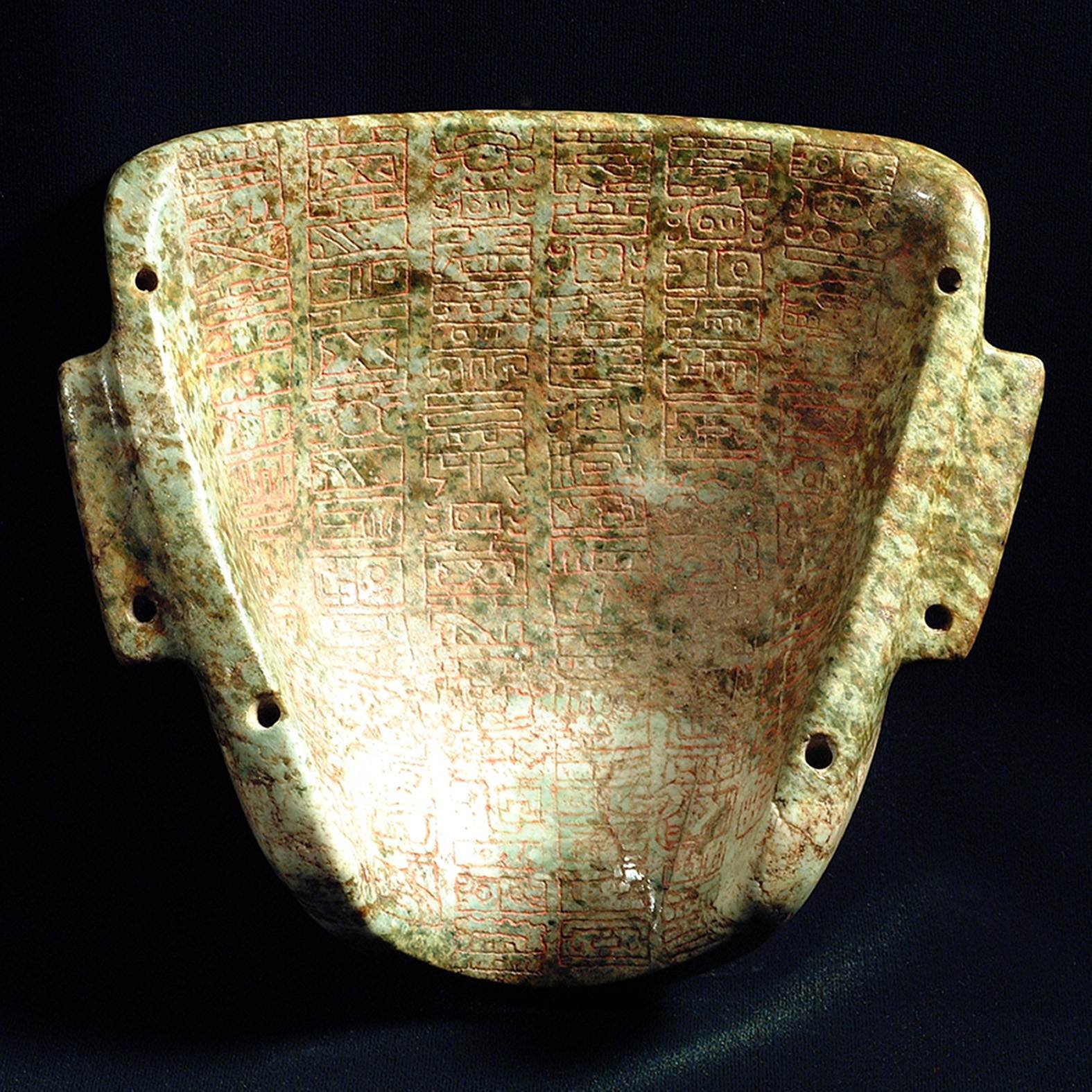Epi-Olmec: Undeciphered Isthmian Script Of Mesoamerica
A. Sutherland - AncientPages.com - There are still many un-deciphered ancient scripts scientists try to learn more about. Among them is the mysterious Isthmian script, also been referred to as "epi-Olmec", based on the belief that it encodes a language descended from that of the Olmec civilization.
Some attempts to decode the script have been made and a decipherment has been proposed, but it has not been accepted by scholars. For the time being the Isthmian script remains an unsolved ancient mystery.
The Isthmian script derives its name from the Isthmus of Tehuantepec, the general area from which the known texts originate. The Isthmus of Tehuantepec is an isthmus in Mexico. It represents the shortest distance between the Gulf of Mexico and the Pacific Ocean. Prior to the opening of the Panama Canal, it was a major shipping route known simply as the Tehuantepec Route.
Unfortunately, there are very few surviving examples of the Isthmian script. The best-known Isthmian inscription is carved on a stela recovered from the site of La Mojarra, a site on the Gulf Coast about half-way between the earlier Olmec sites of Tres Zapotes and Cerro de las Mesas. The stela referred to as Stela 1 from La Mojarra was discovered in 1986. It is a Late Preclassic monument with the longest and most complete text of any known Isthmian script.

A Teotihuacan-style mask unearthed from an unknown location in southern Mexico adds some 101 glyphs to the total number currently known for the ancient Isthmian script. Image credit: Michael Coe
Isthmian script is structurally similar to the Maya script, and Maya uses one set of characters to represent logograms (or word units) and a second set to represent syllables. This suggests these two writing systems developed together. Both systems have the Long Count calendrical system fixed with a zero date. This type of Meso-American writing was often used to record specific events and carved on stone stelae that serve as durable memorials to rules and symbols of political and religious legitimacy.
See also:
The Olmecs – Who They Were, Where They Came From Still Remains A Mystery
Unsolved Enigma Of The Inga Stone And Its Mysterious Ancient Undeciphered Signs
Robert J. Sharer, Loa P. Traxler, author of the book, The Ancient Maya writes that “La Mojarra Stela 1 is a prime example of this use of both carved image and text, including several Long Count dates. It is also clear that the origins of both writing systems must be earlier than the fully developed Late Precalssic inscriptions.
Detail showing three columns of glyphs from La Mojarra Stela 1. The two right columns are Isthmian glyphs. The left column gives a Mesoamerican Long Count calendar date of 8.5.16.9.9, or 156 CE. Image credit: Wikipedia
It is possible that wood was used for the first carved monuments and earlier written records were kept on perishable materials such as bark paper, like those used in later times for Maya codices. Evidence for this lies in the Mayan word for “to write” which is based on the root for “to paint” (with a fine brush).”
The Isthmian script has also been discovered on the Tuxtla Statuette, a small 6.3 inch (16 cm) rounded greenstone figurine, carved to resemble a squat, bullet-shaped human with a duck-like bill and wings. Most researchers believe the statuette represents a shaman wearing a bird mask and bird cloak.

Tuxtla Statuette. Image credit: Wikipedia
Tres Zapotes Stela C, discovered in 1939 by archaeologist Matthew Stirling is also engraved with the mysterious Isthmian script.
A Teotihuacan-style mask unearthed from an unknown location in southern Mexico adds some 101 glyphs to the total number currently known for the ancient Isthmian script. Of these, twenty-five is unique additions to the Isthmian corpus, according to Brigham Young University archeologist Stephen Houston and Yale University professor emeritus Michael Coe.
Written by – A. Sutherland - AncientPages.com Senior Staff Writer
Copyright © AncientPages.com All rights reserved. This material may not be published, broadcast, rewritten or redistributed in whole or part without the express written permission of AncientPages.com
Expand for referencesMore From Ancient Pages
-
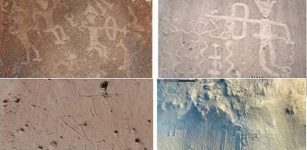 Evidence Of 10,000 Years Of Violent Conflict Among The Hunter-Gatherer Societies In The Atacama Desert
Archaeology | Oct 2, 2023
Evidence Of 10,000 Years Of Violent Conflict Among The Hunter-Gatherer Societies In The Atacama Desert
Archaeology | Oct 2, 2023 -
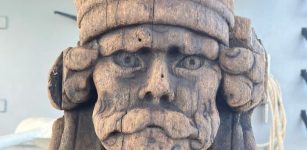 Unique Statue Of Warrior Wearing A Phrygian Cap Accidently Discovered By Dutch Fishermen
Archaeology | Aug 2, 2022
Unique Statue Of Warrior Wearing A Phrygian Cap Accidently Discovered By Dutch Fishermen
Archaeology | Aug 2, 2022 -
 8-Million-Year-Old Jaw May Offer Evidence Humans Evolved In Europe Instead Of Africa – Controversial Theory Suggests
Archaeology | Apr 24, 2019
8-Million-Year-Old Jaw May Offer Evidence Humans Evolved In Europe Instead Of Africa – Controversial Theory Suggests
Archaeology | Apr 24, 2019 -
 Countless Artifacts, Structures And Roads Discovered In Ancient City Of Aigai, Turkey
Archaeology | May 16, 2022
Countless Artifacts, Structures And Roads Discovered In Ancient City Of Aigai, Turkey
Archaeology | May 16, 2022 -
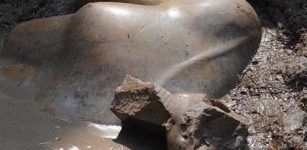 Two 19th Dynasty Royal Statues Unearthed At Ancient Site Of Heliopolis, Cairo, Egypt
Archaeology | Mar 11, 2017
Two 19th Dynasty Royal Statues Unearthed At Ancient Site Of Heliopolis, Cairo, Egypt
Archaeology | Mar 11, 2017 -
 Major Discovery Reveals Neanderthals In Italy Engaged In Plant Food Processing
Evolution | Jun 29, 2023
Major Discovery Reveals Neanderthals In Italy Engaged In Plant Food Processing
Evolution | Jun 29, 2023 -
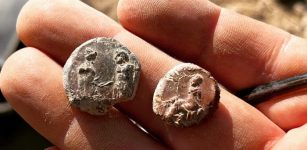 More Than 2,000 Seal Impressions Found In The Ancient City Of Doliche
Archaeology | Nov 24, 2023
More Than 2,000 Seal Impressions Found In The Ancient City Of Doliche
Archaeology | Nov 24, 2023 -
 Bizarre Meat-Eating Dinosaur Found In Classic Fossil Site In Egypt’s Sahara Desert
Archaeology | Jun 9, 2022
Bizarre Meat-Eating Dinosaur Found In Classic Fossil Site In Egypt’s Sahara Desert
Archaeology | Jun 9, 2022 -
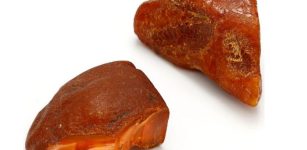 Bronze Age Long-Distance Connections: Baltic Amber In Aššur
Archaeology | May 17, 2023
Bronze Age Long-Distance Connections: Baltic Amber In Aššur
Archaeology | May 17, 2023 -
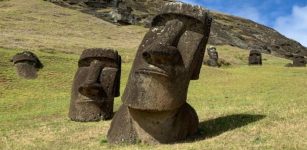 DNA Results Show: Polynesians, Native Americans Made Contact Before European Arrival
Archaeology | Jul 9, 2020
DNA Results Show: Polynesians, Native Americans Made Contact Before European Arrival
Archaeology | Jul 9, 2020 -
 Last Supper Of 15-Million-Year-Old Freshwater Fish
Paleontology | Mar 20, 2025
Last Supper Of 15-Million-Year-Old Freshwater Fish
Paleontology | Mar 20, 2025 -
 Extremely Rare Fossils Of 160-Million-Year-Old Sea Spider And Its Diversity By The Jurassic
Fossils | Aug 22, 2023
Extremely Rare Fossils Of 160-Million-Year-Old Sea Spider And Its Diversity By The Jurassic
Fossils | Aug 22, 2023 -
 Strange And Unexplained Events In Transylvania – One Of The Most Mysterious Places In Europe
Featured Stories | Jan 6, 2022
Strange And Unexplained Events In Transylvania – One Of The Most Mysterious Places In Europe
Featured Stories | Jan 6, 2022 -
 Why Do Native Americans Often Wear Long Hair?
Ancient History Facts | Sep 19, 2019
Why Do Native Americans Often Wear Long Hair?
Ancient History Facts | Sep 19, 2019 -
 Interesting Relief Sculpture Of Pharaoh Hatshepsut Found At Swansea University
Archaeology | Mar 27, 2018
Interesting Relief Sculpture Of Pharaoh Hatshepsut Found At Swansea University
Archaeology | Mar 27, 2018 -
 Heimdallr (Heimdall): Norse God That ‘Illuminates The World’ And Guards The Rainbow Bridge Bifrost In Asgard
Norse Mythology | Feb 6, 2016
Heimdallr (Heimdall): Norse God That ‘Illuminates The World’ And Guards The Rainbow Bridge Bifrost In Asgard
Norse Mythology | Feb 6, 2016 -
 Cretaceous Fossil From Antarctica Reveals Earliest Modern Bird
Fossils | Mar 6, 2025
Cretaceous Fossil From Antarctica Reveals Earliest Modern Bird
Fossils | Mar 6, 2025 -
 Ratatoskr- Inhabitant Of Yggdrasil That Loves Intrigue, Strife And Gossips In Norse Beliefs
Featured Stories | May 28, 2020
Ratatoskr- Inhabitant Of Yggdrasil That Loves Intrigue, Strife And Gossips In Norse Beliefs
Featured Stories | May 28, 2020 -
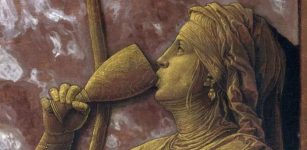 What Happened To Drunken Women In Ancient Rome?
Featured Stories | Aug 30, 2023
What Happened To Drunken Women In Ancient Rome?
Featured Stories | Aug 30, 2023 -
 How Did A Rare 2,000-Year-Old Gem Seal Depicting God Apollo End Up In The City Of David?
Archaeology | Nov 5, 2020
How Did A Rare 2,000-Year-Old Gem Seal Depicting God Apollo End Up In The City Of David?
Archaeology | Nov 5, 2020

